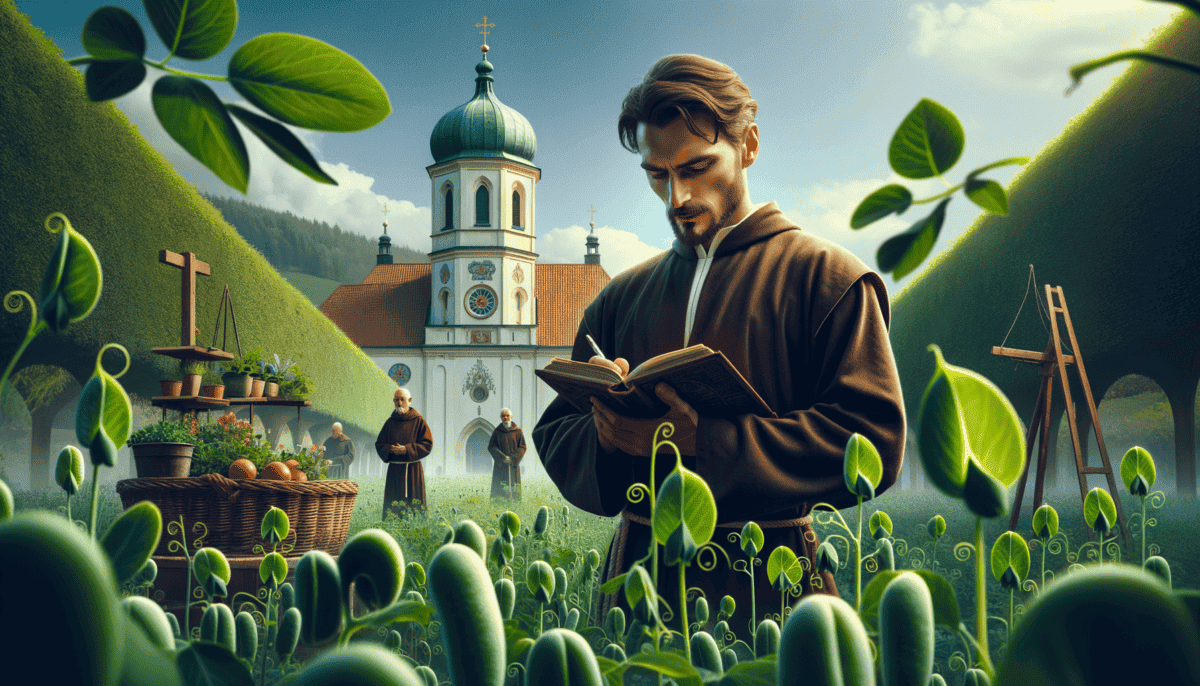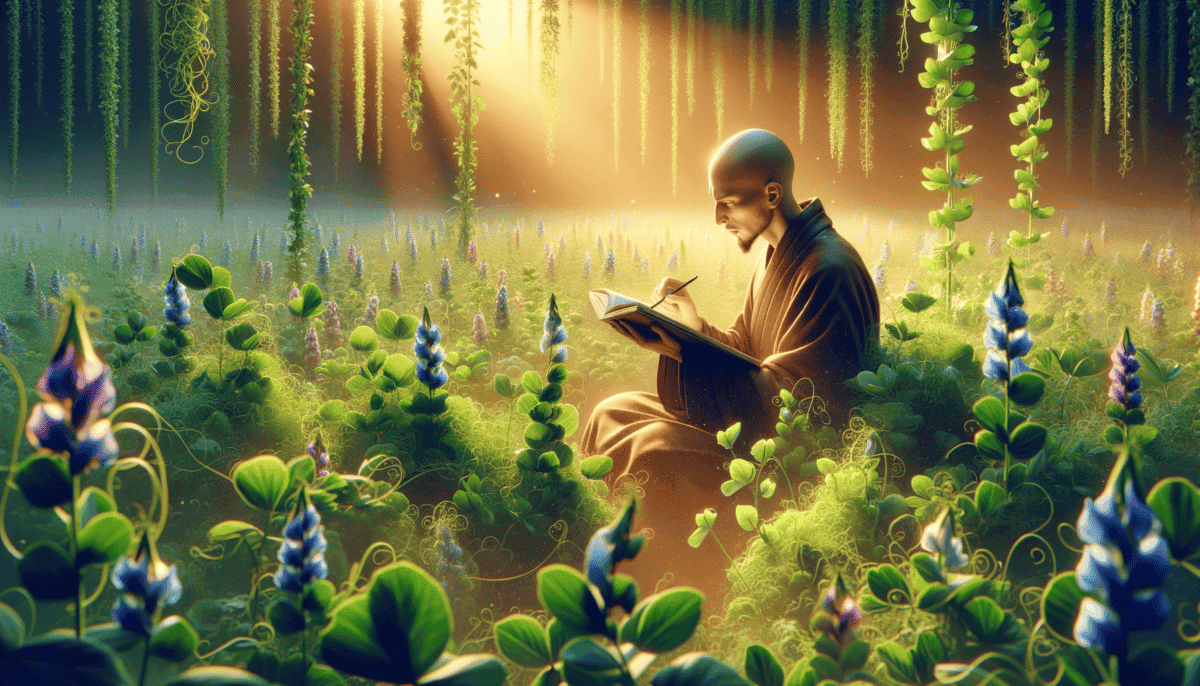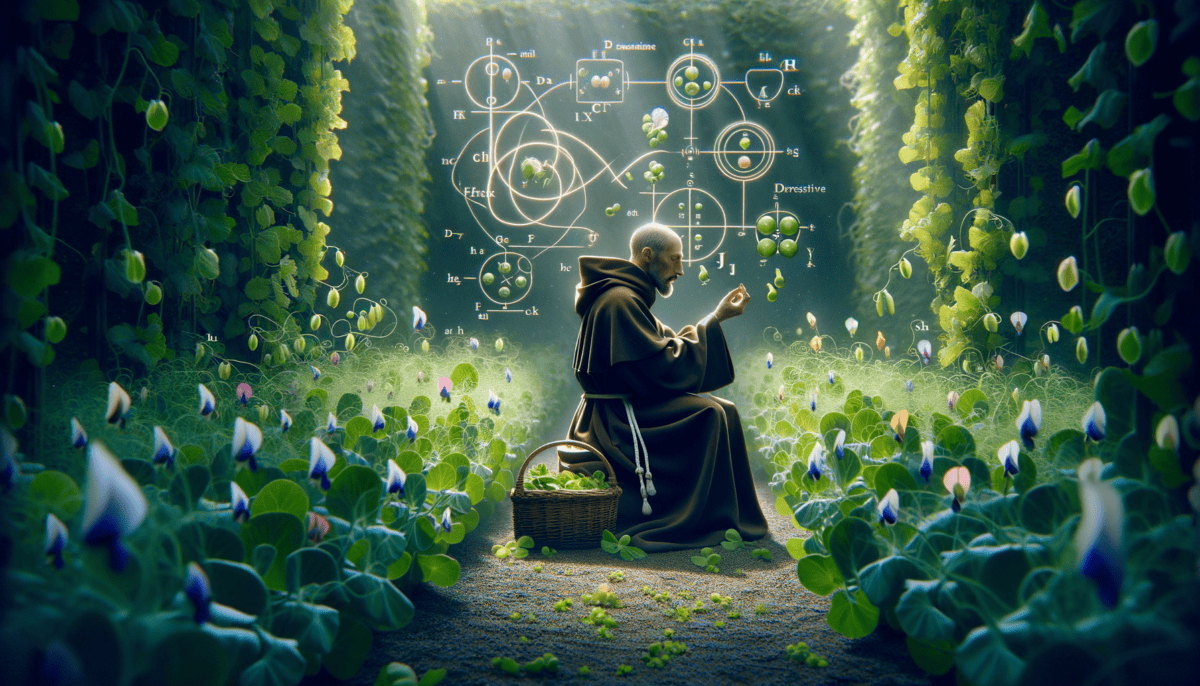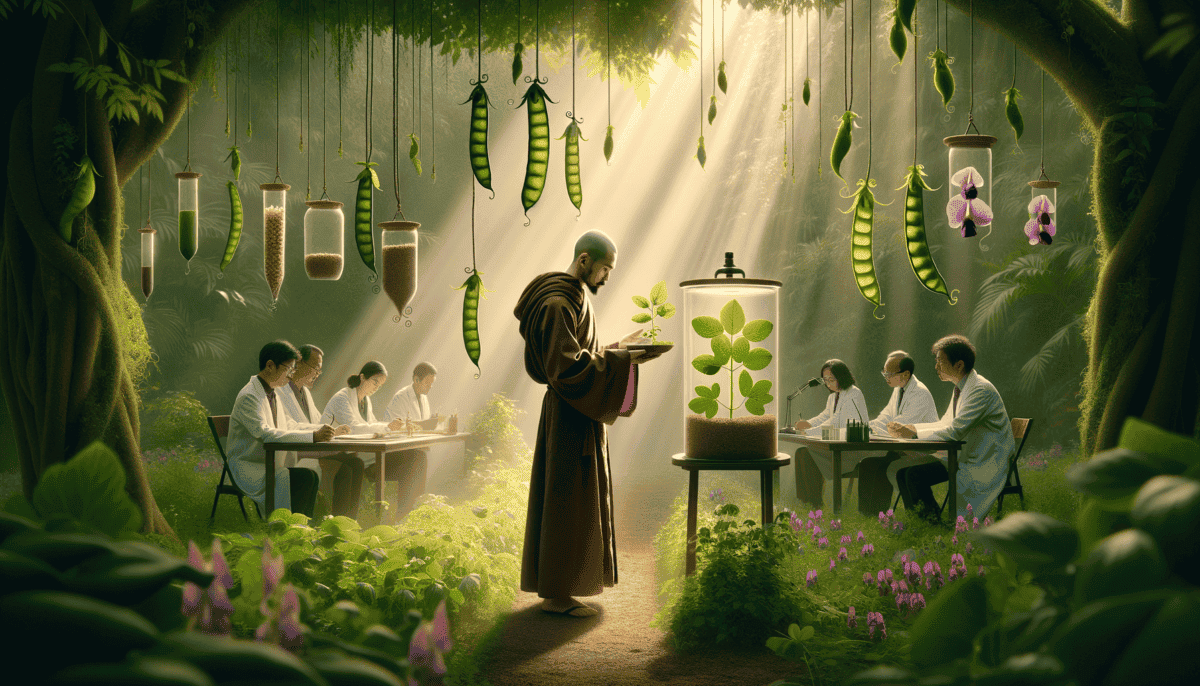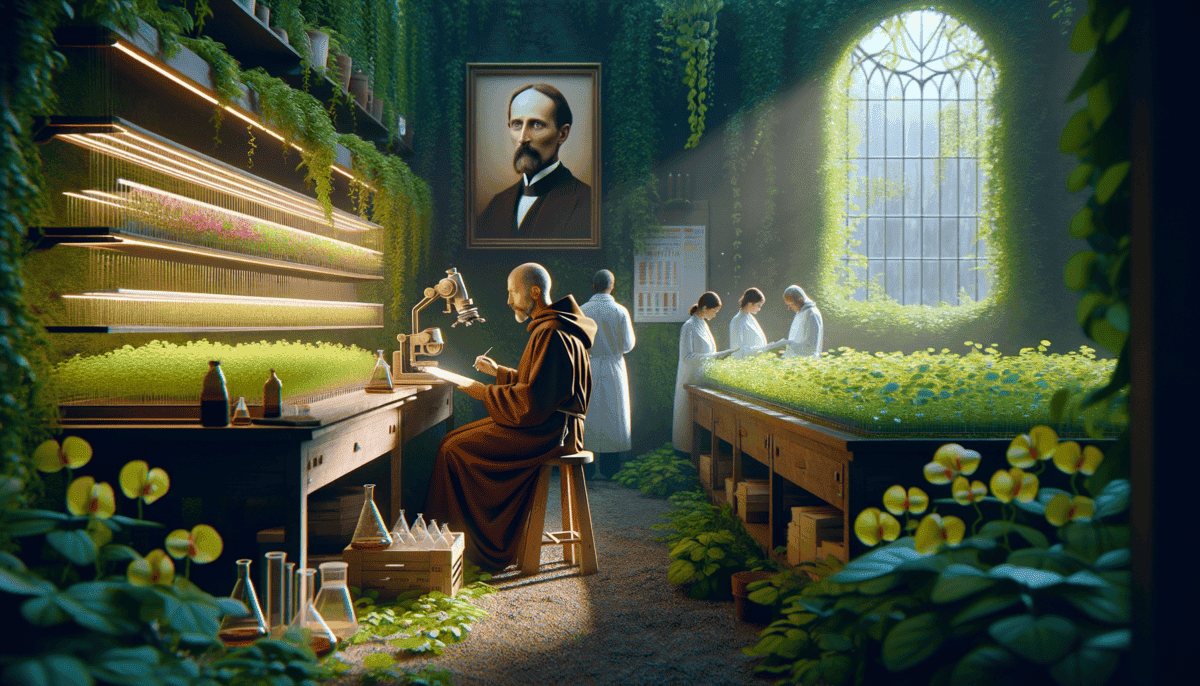Seeds of Curiosity
In a small farm in Heinzendorf, Austria, a young boy named Gregor loved to play in his family’s garden. The year was 1830, and eight-year-old Gregor spent hours watching tiny seeds grow into tall, strong plants.
“Papa, how do the yellow flowers make more yellow flowers?” little Gregor asked his father one sunny morning.
His father smiled and wiped the sweat from his brow. “That’s just how nature works, son. Now help me with these vegetables – you’ll need to know how to run this farm someday.”
But Gregor wanted more than just growing food. He wanted to know why plants grew the way they did. Why were some peas wrinkly and others smooth? Why did some flowers grow tall while others stayed short?
A Different Path
At school, Gregor’s teachers noticed how smart he was. He loved learning about science and nature. His teacher, Mr. Schmidt, often said, “Gregor, you ask such good questions!”
One day, Gregor told his parents big news. “I want to be a monk and study science,” he said bravely.
His father frowned. “But who will take care of our farm?”
“I know farming is important, Papa,” Gregor said softly. “But I want to learn why things grow the way they do. Maybe I can help all farmers that way.”
The Big Decision
It wasn’t easy to convince his family. But Gregor knew in his heart that he needed to follow his dreams. When he was 21, he joined a monastery where he could both serve God and study science.
At the monastery, Gregor found a new family of brothers who loved learning as much as he did. The monastery had a big library and a beautiful garden where he could study plants.
“Brother Mendel,” said Father Thomas, the head of the monastery, “use our garden for your studies. God’s creation has many secrets waiting to be discovered.”
First Steps to Science
Gregor spent hours reading books about plants and animals. He learned about flowers and how they made seeds. He wrote down everything he saw in a small notebook.
“Look how these pea plants grow differently,” he would say to the other monks. “Some are tall, some are short. Some have purple flowers, others have white ones. There must be a reason!”
The other monks smiled at his excitement. They didn’t know it yet, but Gregor was starting to see patterns that would change how we understand all living things.
“Nature speaks to those who listen carefully,” Gregor wrote in his journal. “I will listen, and I will learn.”
As the sun set over the monastery garden each evening, Gregor felt happy. He might not be running his family’s farm, but he was growing something even more important – knowledge that would help people understand nature’s secrets.
The Monastery Garden
The morning bells rang at St. Thomas Monastery in Brno as Gregor Mendel walked through its iron gates. The year was 1843, and his new life was about to begin.
“Welcome to your new home, Brother Mendel,” said Father Abbott, smiling warmly. “I hear you have a special interest in our gardens.”
Gregor’s eyes lit up at the sight of the monastery’s vast garden. It was bigger than anything he had seen before! Neat rows of vegetables stretched far into the distance, and beautiful flowers bloomed everywhere.
A Special Space
Father Abbott showed Gregor to a special corner of the garden. “This will be your experimental plot,” he said. “You can grow whatever you wish here and study nature’s mysteries.”
Gregor could hardly believe his luck. His very own garden! He immediately began planning what to plant.
“Thank you, Father,” Gregor said excitedly. “I promise to use this space wisely!”
Choosing the Perfect Plant
Gregor tried growing many different plants in his garden. He planted beans, corn, and flowers. But something wasn’t quite right. He needed a special plant for his experiments.
One day, while helping in the monastery kitchen, Gregor had an idea. He watched as Brother Michael sorted through peas for soup.
“Brother Michael, may I look at those peas more closely?” Gregor asked.
As he studied the peas, Gregor noticed something interesting. Some peas were smooth and round, while others were wrinkly. Some were green, others were yellow.
• Grow quickly
• Have easy-to-see differences
• Can make their own seeds
Getting Started
Gregor faced some problems at first. Some plants didn’t grow well. Others got eaten by birds. But he didn’t give up!
“Nature teaches us patience,” he would say to himself as he carefully planted new seeds.
He made special tools to protect his plants. He built small fences to keep animals away. He even created little paper bags to put over flowers so bees wouldn’t mix up different types of pollen.
A Growing Discovery
Other monks became curious about Gregor’s work. They would often stop by his garden to see what he was doing.
“Brother Mendel, why do you count every single pea?” they would ask.
“Each pea tells us something important,” he would answer with a smile. “We just have to learn how to listen.”
Every day, Gregor wrote down what he saw in his garden. He counted plants, measured their height, and noted the color of their flowers. His notebook started filling up with numbers and drawings.
As summer turned to fall, Gregor’s pea plants grew tall and strong. Little did he know that these simple plants would help him make one of the biggest discoveries in science.
In the quiet of his garden, surrounded by his beloved pea plants, Gregor felt at peace. He was right where he needed to be, ready to unlock nature’s secrets, one pea pod at a time.
The Science of Seeds
Spring sunlight streamed through Gregor’s window as he opened his notebook. His desk was covered with dried pea pods and little paper bags full of seeds.
“Today is a special day,” Gregor whispered to himself. “Time to count my garden’s treasures!”
The Garden Detective
Gregor had become like a garden detective. He looked closely at every pea plant, noticing things others might miss. Some plants were tall, others short. Some had purple flowers, others white.
• Plant height
• Flower color
• Seed color
• Seed shape
• Pod shape
• Pod color
• Flower position
Brother Thomas knocked on Gregor’s door. “Still counting seeds?” he asked with a smile.
“Yes!” Gregor replied happily. “Each seed tells a story. Look at these!”
The Magic of Numbers
Gregor showed Brother Thomas two piles of peas. One pile had round, yellow peas. The other had wrinkly, green ones.
“When I plant the round yellow peas, guess what happens?” Gregor asked excitedly. “Most of their baby plants make round yellow peas too!”
Brother Thomas leaned closer, interested. “But not all of them?”
“That’s the amazing part!” Gregor’s eyes sparkled. “Sometimes the baby plants make different peas. It follows a pattern!”
Garden Secrets
Every day, Gregor worked in his garden. He tied tiny paper bags around flowers to keep bees away. This way, he could choose which flowers got pollen from which plants.
He wrote everything down in his notebook:
Monday: Planted 100 yellow peas
Tuesday: Counted 28 new sprouts
Wednesday: Measured plant heights
Thursday: Checked flower colors
A Big Discovery
One sunny afternoon, while counting his peas for the hundredth time, Gregor noticed something amazing. The way plants passed on their traits wasn’t random – it followed rules!
“It’s like nature has a secret code,” he said to himself, scribbling excited notes. “And I’m starting to understand it!” ✨
Sharing the News
That evening at dinner, Gregor could hardly contain his excitement. He tried to explain his discovery to the other monks.
“Think of it like this,” he said, using peas from his soup bowl. “If a tall plant and a short plant have baby plants, the babies aren’t always medium-sized. Sometimes they’re tall, sometimes they’re short!”
The other monks listened politely, but they didn’t quite understand why Gregor was so excited about peas.
Late Night Studies
Even after dark, Gregor worked by candlelight. He drew pictures of his plants and wrote down numbers. Each page in his notebook held another piece of the puzzle.
“Tomorrow,” he thought as he closed his notebook, “I’ll count more peas, and maybe nature will share another secret with me.”
Discoveries and Dreams
Gregor sat at his desk, his heart beating fast. His hands trembled as he looked at his notes again.
“I think I’ve found something amazing!” he whispered to himself.
A Special Pattern
After years of watching his pea plants, Gregor saw something no one else had seen before. Some traits were stronger than others! He called these “dominant” traits.
When a tall plant and a short plant had baby plants, most babies were tall! The tall trait was dominant.
“Brother Thomas!” Gregor called out excitedly. “Come see this!”
Explaining the Magic
Brother Thomas hurried into the room. Gregor spread out his papers on the desk.
“Look here,” Gregor pointed to his drawings. “When I mix yellow and green peas, the baby plants mostly make yellow peas. But sometimes, the green color comes back in later plants!”
Brother Thomas scratched his head. “But how do you know this isn’t just luck?”
“Because it happens over and over again,” Gregor smiled. “It’s like nature follows rules, just like we follow rules in the monastery!” ✨
Making it Simple
Gregor worked hard to make his discovery easy to understand. He used letters to show his ideas:
T = Tall plant trait
t = short plant trait
When T and t meet, T wins!
Getting Ready to Share
Gregor knew his discovery was important. He needed to tell other scientists about it. But how could he explain it so everyone would understand?
“I’ll use numbers,” he decided. “Numbers don’t lie. They’ll show everyone that this is real!”
Practice Makes Perfect
Every evening, Gregor practiced explaining his ideas to the other monks. Some understood better than others.
“Think of it like soup,” he told them. “If you mix two different kinds, one taste might be stronger. But the other taste is still there, hiding!”
Dreams of Tomorrow
Late at night, Gregor sat in his garden. The moon shone on his beloved pea plants. He dreamed about how his discovery might help people understand all living things better.
“Maybe someday,” he thought, “everyone will understand these patterns in nature.”
Writing it Down
The next morning, Gregor began writing a special paper about his discovery. He wanted to share it with scientists all over the world.
“Dear Fellow Scientists,” he wrote. “I have found something wonderful in my garden. Let me tell you about the secret rules of life…” ✍️
Speaking to the Stars
The big day had finally come. Gregor stood in front of a room full of scientists, his heart beating like a drum.
A Nervous Start
“My dear colleagues,” Gregor began, his voice shaking a little. “I want to tell you about something amazing I found in my garden.”
Tough Questions
As Gregor talked about his pea plants, he saw confused faces in the crowd. One scientist raised his hand.
“But Brother Mendel,” the man said, “how can plants follow rules like this? It makes no sense!”
“Nature has many secrets,” Gregor replied kindly. “We just have to look carefully to find them.”
Numbers Tell the Story
Gregor showed his careful notes. He had counted thousands of pea plants!
705 tall plants
224 short plants
Always the same pattern!
Lonely Feelings
After his talk, not many scientists seemed excited. They didn’t understand how important his discovery was.
“Maybe they need more time to think about it,” Brother Thomas said, trying to cheer Gregor up.
Keep Going Strong
Even though others didn’t believe him, Gregor knew he was right. He went back to his garden with new energy.
“The truth is like a seed,” he thought. “Sometimes it takes time to grow.”
Writing it All Down
Gregor spent many hours writing everything in his notebooks. He wanted to make sure his work would be safe.
Special Helper
A young monk named Carl became very interested in Gregor’s work.
“Please teach me everything you know,” Carl begged.
Gregor smiled. “Of course! It’s good to share knowledge with others who want to learn.”
Looking Forward
As the seasons changed, Gregor kept working in his garden. He believed that someday, people would understand why his discovery was so special.
“The truth is patient,” he told his pea plants. “It can wait until the world is ready.”
Never Giving Up
Even when others didn’t believe in his ideas, Gregor stayed happy and kept working. He knew that what he found was real and important.
“Nature doesn’t make mistakes,” he would say. “We just have to learn how to read her story.”
A Garden’s Promise
Many years passed after Gregor Mendel left his garden. His notebooks sat quietly on a shelf, waiting to be found.
A New Discovery
One sunny morning in 1900, three scientists from different countries found something amazing. They were reading old science papers when they saw Gregor’s work!
“Look at these patterns!” one scientist gasped. “This monk figured it all out years ago!”
The Big News
Word spread quickly through the science world. Everyone was talking about the quiet monk who had solved one of nature’s biggest puzzles.
A Garden Remembered
People started visiting the monastery garden where Gregor once worked. They wanted to see where the magic happened.
“This is where he counted his pea plants,” tour guides would say. “Right here, he changed science forever!”
Helping Others Learn
Teachers began sharing Gregor’s story with their students. His simple pea plant experiments helped explain how parents pass traits to their children.
Today, every scientist who studies genes thanks Gregor Mendel!
The Story Lives On
Carl, the young monk who learned from Gregor, grew old telling stories about his friend.
“Gregor never lost faith,” Carl would say. “He knew someday people would understand.”
A Special Place
The monastery turned Gregor’s old room into a museum. People from all over the world come to learn about the monk who loved science.
“He showed us that big discoveries can come from watching small things carefully,” the museum guide explains.
Today’s Scientists
Modern scientists use big computers and special tools to study genes. But they all remember how it started – with a curious monk and his pea plants.
The Garden Today
In Brno, Gregor’s garden still grows. New scientists work there, making their own discoveries.
“Every pea plant here tells Gregor’s story,” they say. “It reminds us to keep asking questions about our wonderful world.”
A Lasting Gift
Gregor Mendel showed us something important: nature follows beautiful patterns. His careful work in a simple garden helped us understand how life passes from parent to child.
And so, the quiet monk who loved pea plants became one of science’s greatest heroes. His story teaches us that big dreams, patience, and hard work can lead to amazing discoveries!


